Published
9 months agoon
By
Ann Uruvath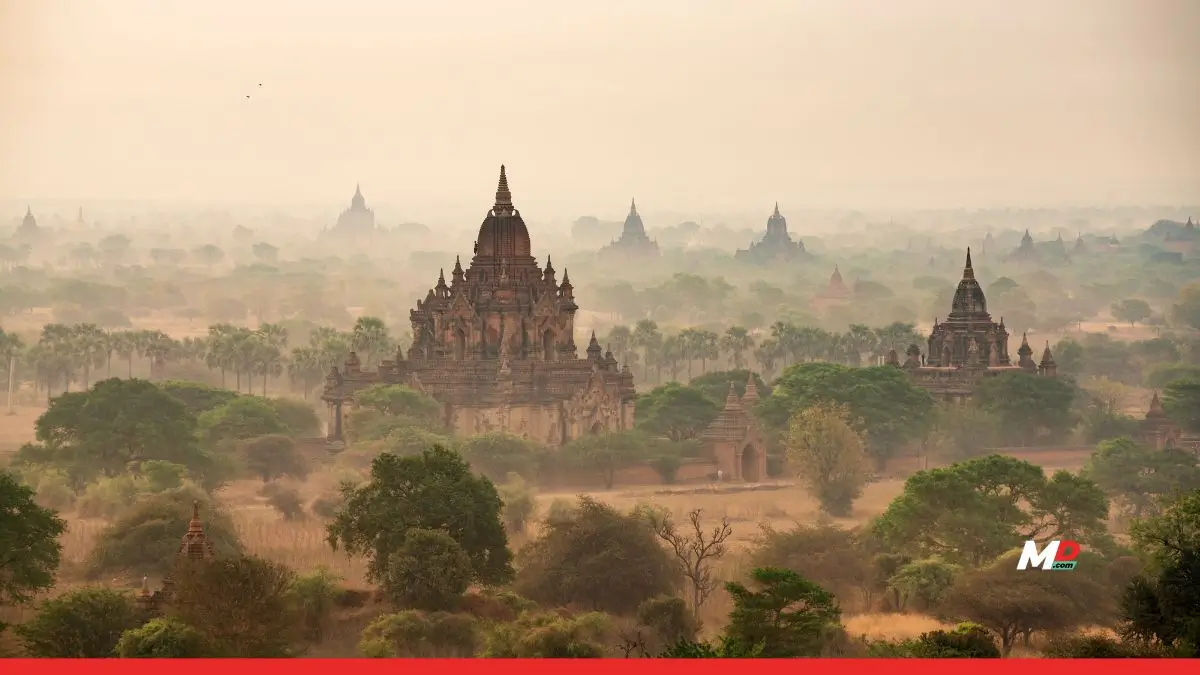
India’s ancient temple architecture evolved to exceptional levels in different regions, influenced by geographical, climatic, ethnic, racial, historical, and linguistic diversity. These factors led to distinct styles of temple construction across the country. Broadly, ancient Indian temples are categorized into three architectural styles based on the techniques used in their construction. Here’s a look at nine of the most breathtaking temples in India, celebrated for their architectural brilliance.
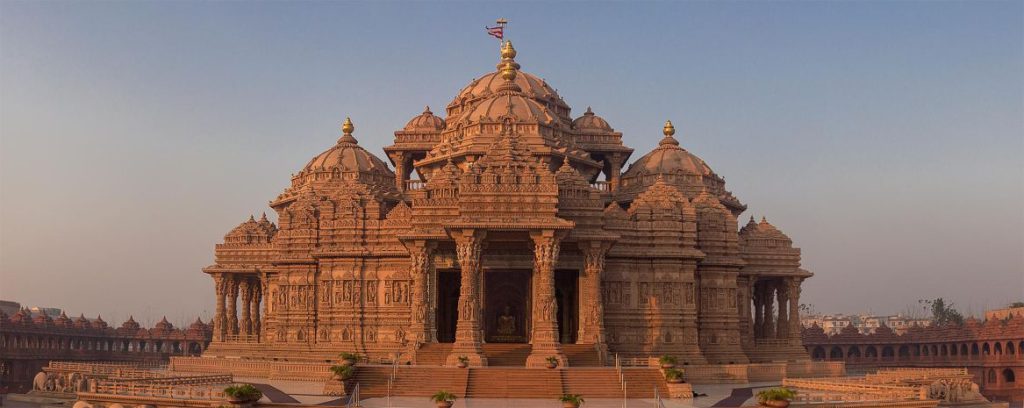
This temple is crafted following the principles of Maharishi Vastu Architecture. Built entirely from Rajasthani pink sandstone and Italian marble, the structure is free from metals like iron or copper. Towering ten stories high, the temple features 234 intricately carved pillars, nine domes, and over 20,000 sculptures of saints and devotees. Additionally, it houses a remarkable collection of 134 life-sized elephant statues. The temple honors Swaminarayan, whose 11-foot-tall idol, seated in the abhayamudra pose, is placed under the main dome. Other deities, including Sita Ram, Radha Krishna, Shiv Parvati, and Lakshmi Narayan, are also enshrined here, with each idol crafted from a combination of five sacred metals, as per Hindu traditions.
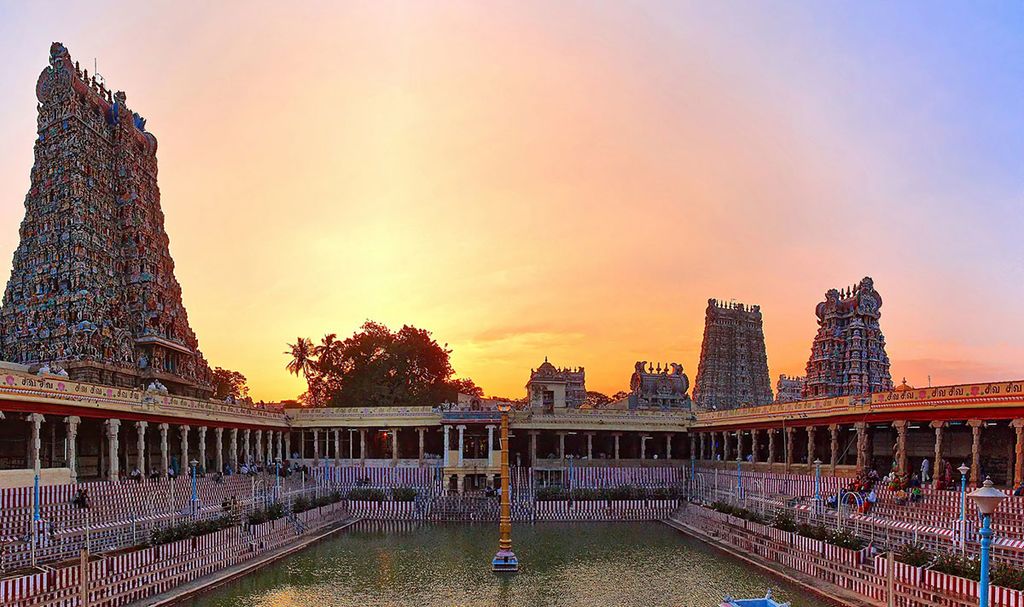
An exemplary masterpiece of Dravidian architecture, this temple is located in the heart of Madurai, spanning a vast 14 acres. It is surrounded by imposing walls built as a defense against historical invasions. From an aerial perspective, the temple complex resembles a mandala, symbolizing symmetry and spiritual alignment. Besides the primary shrines dedicated to Meenakshi and Sundareswarar, the temple houses sanctums for deities like Ganesha and Murugan, as well as goddesses Lakshmi, Rukmini, and Saraswati.
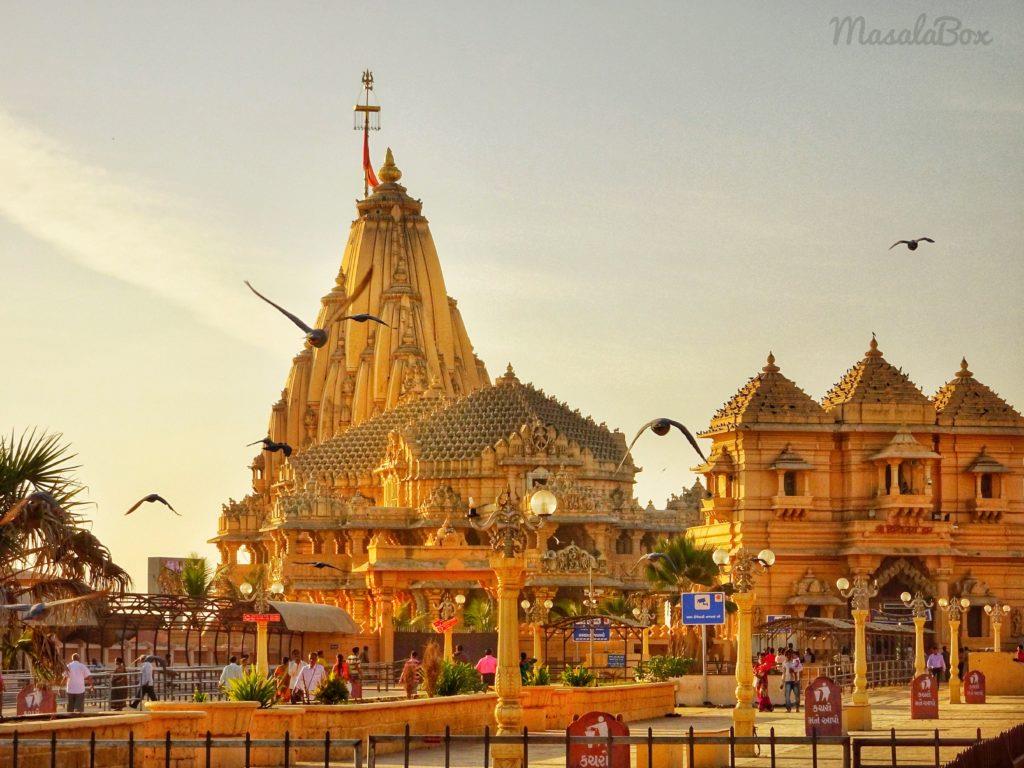
Perched on the Arabian Sea’s coastline, the Somnath Temple showcases the grandeur of Chalukya-style architecture. Originally constructed using sandalwood, the current structure, standing at 15 meters, features seven stories and an 8.2-meter flagpole atop its summit. The temple’s strategic construction ensures that no landmass obstructs the view from Somnath’s shore to Antarctica. The craftsmanship of Gujarat’s Sompura masons, known for their architectural expertise, is evident in every intricate detail of the temple.
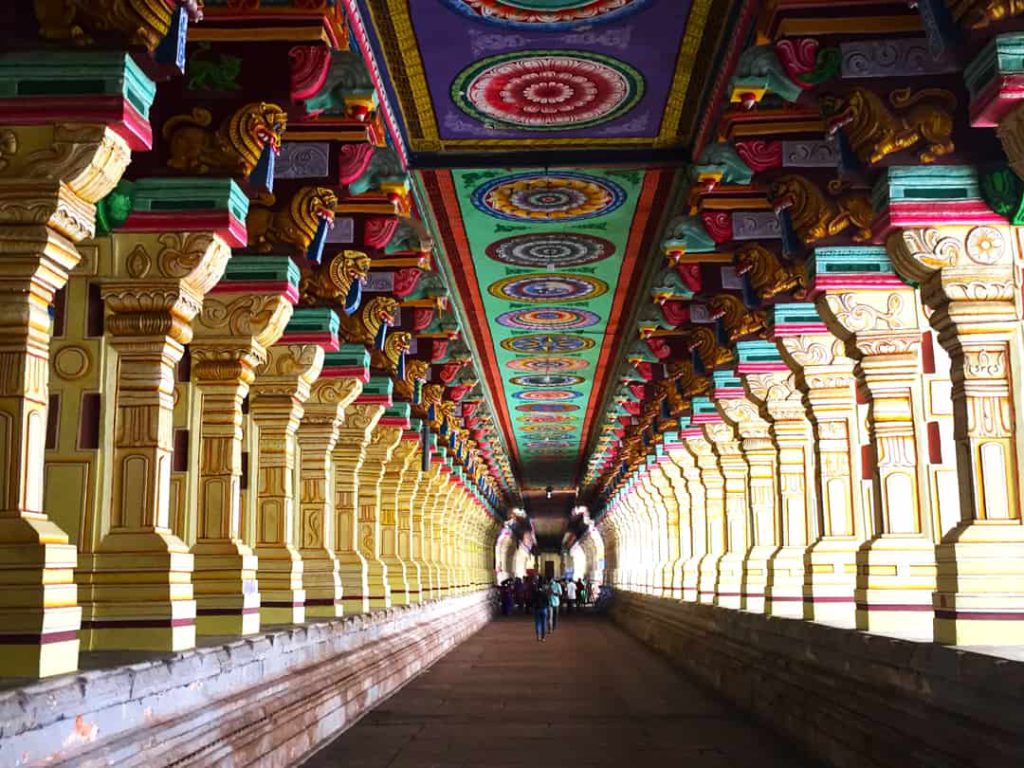
Renowned for having the longest corridor of any Hindu temple, this Dravidian-style marvel boasts a 4,000-foot-long pillared passage with over 4,000 intricately designed columns. Its towering 21 gopurams (temple towers) contribute to its breathtaking grandeur. One of its most striking sections is the “Hall of 1000 Pillars,” a meticulously structured gallery with exquisite sculptures. Opposite to it stands the stunning “Sesha Mandap,” an architectural wonder adorned with masterful carvings.
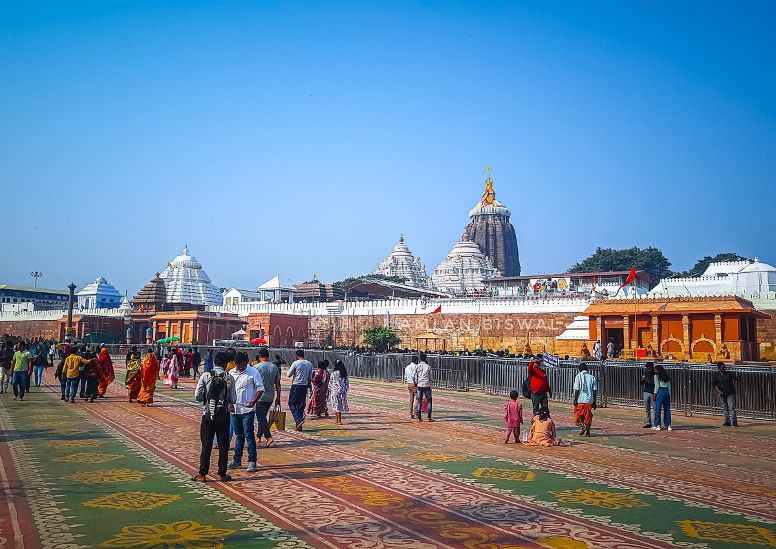
Encompassing over 400,000 square feet, this temple complex is fortified with high boundary walls and contains more than 120 shrines. Built in the Kalinga architectural style, the temple features a striking monolithic pillar with sixteen facets at its entrance. Two massive lion statues guard the gateway, adding to the temple’s imposing presence. The sacred space is an integral part of Hindu pilgrimage, especially during the annual Rath Yatra festival.
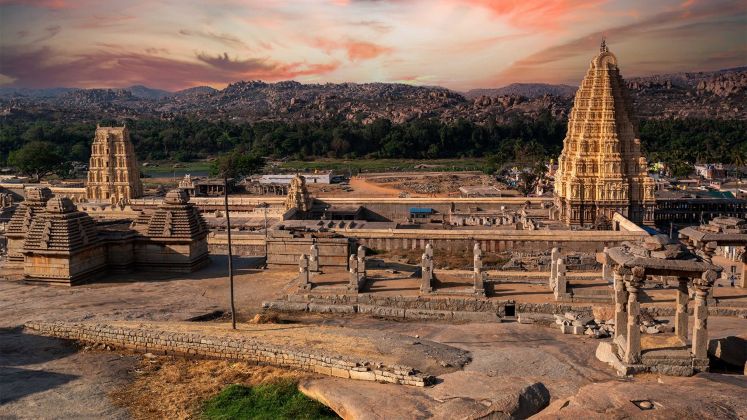
A remarkable example of Vijayanagar architecture, this temple is adorned with elaborate carvings and vibrant murals. The complex includes a nine-tiered entrance tower, pillared halls, courtyards, and various shrines. Though its origins date back to the 15th century, King Krishnadevaraya extensively reconstructed it in the 16th century. The temple’s walls narrate legendary tales from Hindu epics like the Ramayana and Mahabharata through intricate paintings and sculptures.
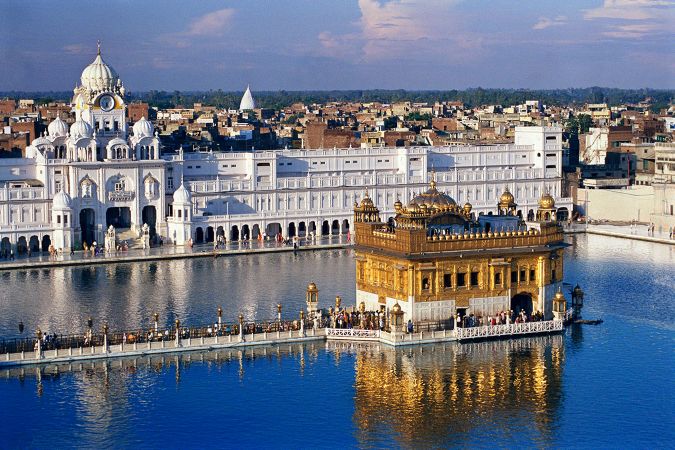
Also known as Sri Harmandir Sahib, this sacred Sikh shrine is built on a 67-square-foot platform and is surrounded by the serene Amrit Sarovar (Holy Pool of Nectar). Covering 40.5 square feet, the temple is accessible from all four sides, symbolizing inclusivity. The gateway features ornate inlay work, with sacred verses from the Guru Granth Sahib engraved on its walls. Its gleaming golden exterior gives it a divine aura, making it one of the most iconic religious structures in India.
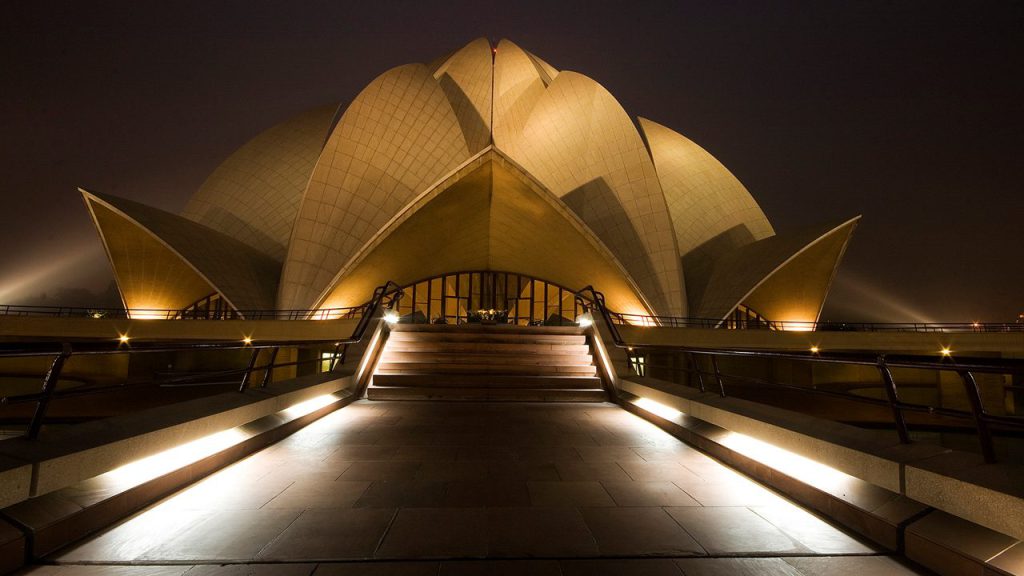
Standing over 40 meters tall, this awe-inspiring temple is shaped like a blooming lotus with 27 massive white marble petals. The design incorporates nine walkways and pools, representing the nine spiritual paths of the Bahá’í faith. The temple complex consists of the main worship hall, an administrative block, a reception center, and a library. The pools surrounding the structure serve both aesthetic and functional purposes, helping to naturally ventilate the space while enhancing its tranquil ambiance.
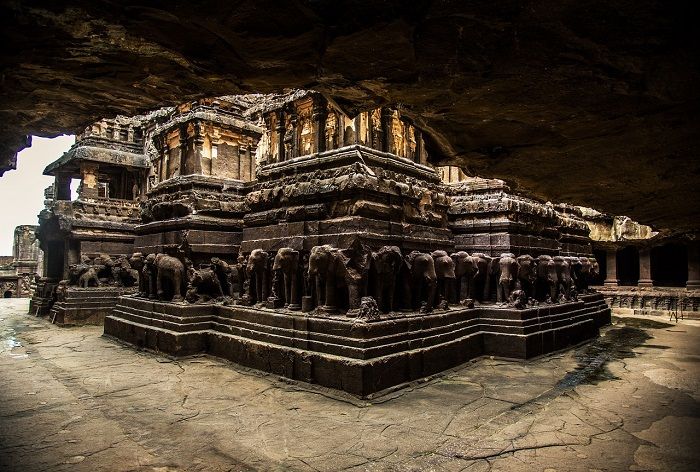
This temple is considered the world’s largest monolithic architectural structure, carved directly from a massive rock formation. Unlike conventional temple construction, which begins at the base, this temple was sculpted from the top downward. An astonishing 400,000 tons of rock were removed to shape this U-shaped, three-story marvel. Towering 60 feet high and extending 200 feet wide, Kailasa Temple is an extraordinary example of rock-cut craftsmanship and ancient engineering.
Each of these temples reflects India’s rich architectural heritage, blending spirituality with extraordinary craftsmanship. Whether made of intricately carved stone, gleaming gold, or monolithic rock, these temples stand as testaments to India’s artistic and cultural legacy.


India’s Growth Engines Awarded: Most Preferred Workplaces 2025 Set New People-Centric Benchmarks


India’s Growth Engines Awarded: Most Preferred Workplaces 2025 Set New People-Centric Benchmarks


CBI books Anil Ambani’s son, RHFL in ₹228 Crore bank fraud case


Quick-Commerce Heading for Shakeout as Funding Model Fails, Warns Blinkit CEO


Venkatesh Iyer never looked at us during trials and I thought he was someone with a lot of attitude : Abhishek Nayar


Welspun One expands footprint with 46-acre Talegaon MIDC project; unveils ~INR 550 crore plan for a next-generation logistics park

